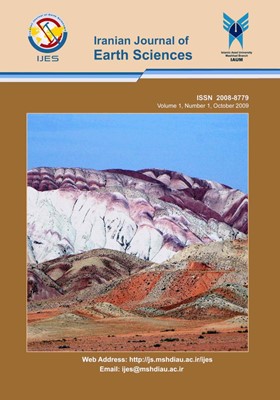Tectonical history of Arabian platform during Late Cretaceous An example from Kurdistan region, NE Iraq
الموضوعات : Mineralogyکمال حاجی کریم 1 , زردشت. ا طاها 2
1 - Department of Geology, University of Sulaimani, Iraq
2 - Department of Geology, University of Sulaimani, Iraq
الکلمات المفتاحية: Iraq, Arabian platform, Kurdistan region, Tectonic cycles, Petrography,
ملخص المقالة :
New simplified tectonic models and depositional history of Late Cretaceous rocks are established in a part of Zagros Orogenic Belt that is located in the Northeastern Iraq. These rocks constutes the most important Cretaceous oil reservoir in the Middle East. The dependent tools are petrography, field study and the concept of drowning phases. This concept is relatively new and accurate in explanation of development of carbonate sequences growth and termination. The columns of both carbonate and clastics rocks of the area are divided into three phases of drowning: 1- Pre-drowning phase of reefal limestone which is represented by Qamchuqa Formation which is equivalent to Mauddud and Shuaba formations (Early Cretaceous) in the south Iraq and in the Gulf. 2- Transitional phase of pelagic limestone and marl deposition which is transitional to post drowning phase during which Gulneri Shale and Dokan limestone Formations (Cenomanian- Turonian) are deposited. 3- Post drowning phase of deep carbonate sedimentation during which Kometan Formation (Santonian-Campanian) and 4- Burial Phase in which Shiranish and Tanjero Formations (Maasstrichtian) are deposited by which Arabian Platform was covered by siliciclastics sediments and main carbonate sedimentation was ended during Campanian. These phases, as resulted from tectonics of Zagros, can replace the complex previously assigned tectonic and depositional history of the area during Later Cretaceous. The application of the phases revealed nearly a continuous history of deposition in foredeep during Early Cretaceous and foreland basin during later ages. This continuous sedimentation is opposite to previously cited episodic sedimentation in the Cretaceous basins. Moreover than that, the occurrences of the previously mentioned subaerial cycles of erosion (unconformities) are not ascertained. The previous cycles had segmented the rocks and history of the area into several separated and unrelated tectonic events that occurred in different basins. According to the above cycles and unconformities the tectonic setting and depositional history of the whole northwestern Iraq assumed be violent during compete time span of the Late Cretaceous by which basin isolation and uplift and erosion occurred. The above ideas are amended and the unconformable boundaries are changed to conformable ones. Consequently, in the present study, a new tectonic history and model are established for Cretaceous which agree with field observation and existed lithofacies.


